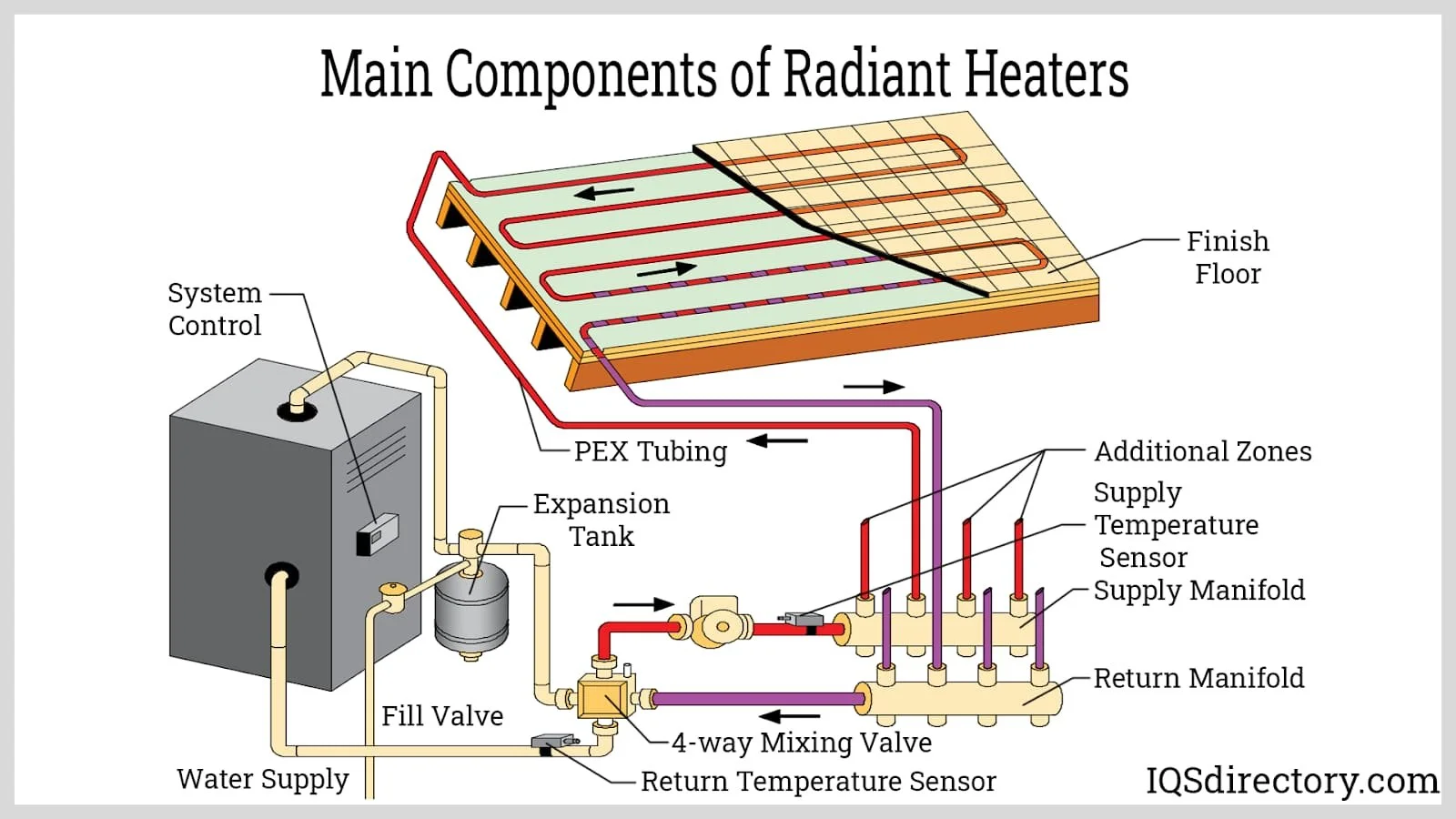Comfort Revolution: Embrace Radiant Floor Heating in Your Home
There's nothing quite like the thought of stepping onto a warm floor that instantly envelops your feet in cozy comfort. If you're planning a new home or major renovation and dreaming of all the wonderful possibilities, a great home experience begins with designing a comfortable interior environment. One of the most inviting features you can incorporate is radiant floor heating, transforming your living space into a sanctuary from the cold.
History of Radiant Floor Heating
This luxurious sensation has its roots in ancient times and has been embraced by visionary architects like Frank Lloyd Wright. During a visit to Japan in the 1920s, Wright experienced the "indescribable warmth" of a traditional Korean heating system called ondol. This centuries-old method involves circulating hot air or smoke through channels under a raised floor, typically made of stone or clay.
Inspired, he introduced radiant floor heating into his designs, starting with the bathrooms of Tokyo's Imperial Hotel. His commitment to creating efficient, comfortable homes led to the incorporation of this innovative heating method in his Usonian houses. These homes, designed for middle-class families, featured concrete slab floors with embedded heating pipes, allowing for even heat distribution and eliminating the need for bulky radiators or ductwork
Interestingly, the concept of radiant floor heating has ancient roots, dating back as far as 5000 BC. However, it was the Romans who truly refined and popularized this technology with their hypocaust systems. These ingenious setups circulated heat from wood-burning fires through tunnels beneath stone floors, keeping their baths and villas comfortably warm. The hypocaust system proved so effective that it spread throughout the Roman Empire, from Britain to North Africa, demonstrating that the desire for cozy interiors is truly timeless.
Wright's first private home to incorporate underfloor heating was the Herbert and Katherine Jacobs House in Madison, Wisconsin, completed in 1937. This house became a model for Wright's Usonian homes and inspired architects and homeowners worldwide.
By the time the Wright-designed Melvyn and Sara Smith House began construction in 1949, developers like William Levitt were popularizing the use of radiant heating in tract housing developments across the United States.
Modern Radiant Floor Heating Systems
The principle behind these ancient heating methods remains the same in modern radiant floor heating systems: warmth rises from the floor, creating a comfortable environment from the ground up. This approach not only provides even heat distribution but also allows for lower air temperatures while maintaining comfort, potentially leading to energy savings. In fact, a typical radiant-heated home in the U.S. can expect a 25% energy savings over a conventional forced-air home.
Modern radiant floor heating systems offer additional benefits beyond energy efficiency. They provide silent heating, improve indoor air quality, and reduce the spread of airborne illnesses and incidents of asthma.
The absence of visible heating elements also gives architects complete design freedom, allowing for uncluttered spaces and the placement of furniture without regard to registers, vents, or wall radiators.
Types of Radiant Floor Heating Systems
There are two main types of radiant floor heating systems to consider:
Hydronic Systems: These use a network of pipes to circulate hot water beneath the floor. While more complex to install, they are typically more cost-effective for heating larger areas and are suitable for both new construction and retrofit projects.
Electric Systems: Utilizing heating cables or mats installed under the floor, electric systems are easier to install and ideal for single-room applications or retrofits. However, it's important to note that in California, electric radiant systems don't meet energy code requirements for primary heating. They can, however, be used as supplemental heating in bathrooms and other small spaces.
Options for New Construction and Retrofits
Whether you're building a new home or renovating an existing one, there's a radiant floor heating solution for you:
New Construction: Both hydronic and electric systems can be easily incorporated into new builds. Hydronic systems are particularly well-suited for whole-house heating in new construction projects, offering energy efficiency and even heat distribution.
Retrofits: While electric systems are often chosen for remodels due to their easier installation and lower profile, hydronic systems are also available for retrofit projects. For example, hydronic radiant floor heating can be installed on top of existing subfloors using grooved panels or snap-in grids or even clipped to the underside of floors between joists.
Considerations for Installation
When planning your radiant floor heating system, keep in mind:
Proper insulation is crucial for system efficiency, especially beneath the heating elements.
For hydronic systems, consider the heat source. Options include boilers, heat pump water heaters, and even renewable energy sources like solar thermal systems or geothermal heat pumps.
In retrofit projects, the installation method may depend on your existing floor structure and the type of flooring you plan to use.
Embrace Comfort and Efficiency: Expert Guidance on Radiant Floor Heating
Experience the timeless comfort of radiant floor heating in your new home or renovation project. As architects with extensive experience in designing homes with this luxurious feature, we can provide expert guidance to seamlessly integrate radiant heating into your space. Contact us today to start planning your dream home, where warmth and efficiency meet innovative design.




